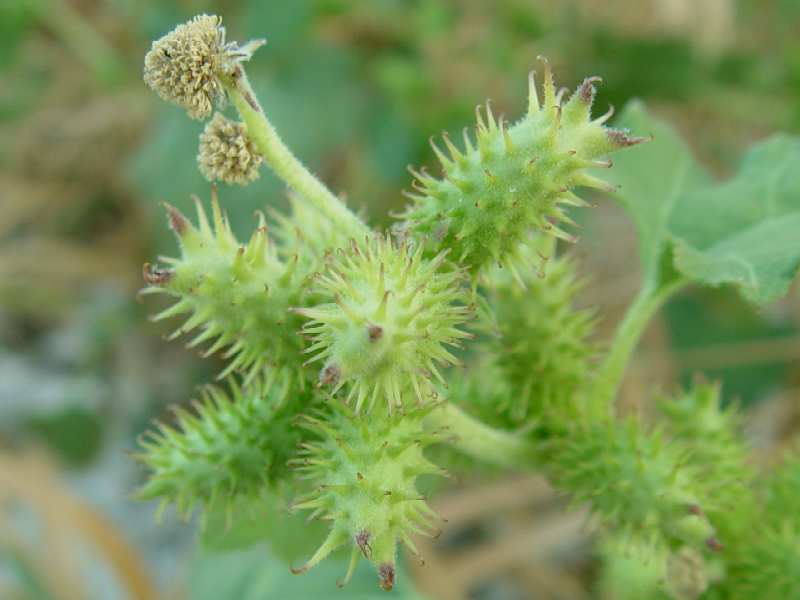
Also called clotbur, donkey bur, heartleaf, and woolgarie bur, this summer annual is a member of the aster family, Asteraceae, that also includes sunflower, yarrow, and lettuce. It’s native range is uncertain but it is found throughout the US today where it grows in a variety of habitats such as cultivated fields, coastal dunes, watercourses, and waste places. Cocklebur prefers moist to wet sandy loam or loams in full sun to partial shade. The plants have been used in traditional medicine especially in South Asia to treat many ailments including aches and pains, respiratory allergies, sinusitis, headache, gastric ulcer, urticaria, rheumatism, arthritis, and bacterial and fungal infections. Photo Credit Franco Folini Wikipedia Commons
Description: Seedlings begin to appear in the spring and continue into summer. The seedling stems are purple at the base and bear large medium green leaves. As the seedling matures, erect, branched stems grow 2-6 1/2 feet high and are covered with short stiff hairs, bumps, and longitudinal ridges. The stems are green with maroon to black spots and bear alternate leaves on long petioles. The lobed leaves are 2-6” long, triangular to ovate, and have stiff hairs. Clusters of inconspicuous green male and female flowers are produced on the same plant on short petioles arising from the leaf axils. Green burs develop from the female flowers, each containing 2 seeds, one germinating the following year, the other germinating the year after. Each bur is about ½” long and is covered with hooked barbs, with two extra long ones at one end. The burs turn brown as they mature and hook onto animals as they pass by. A single plant can produce 400 seeds in a season. The root is a taproot.
Poisonous Properties: The seeds and leaves of young seedlings are toxic to livestock when ingested due to the presence of the highly toxic glycoside, carboxyatractyloiside. The symptoms of poisoning include loss of appetite, vomiting, hypoglycemia, weakness, muscular spasms and sometimes coma and death of the animal. Mature plants are relatively nutritious but are unpalatable due to the rough texture of stems and leaves, and are not problem to livestock. Allergic skin irritation may result from external contact.
seeds in the burs and young seedlings (cotyledonary leaves) contain the toxic principle, carboxyatractyloside.
. Although mature plants are not toxic they are distasteful to animals and not eaten.